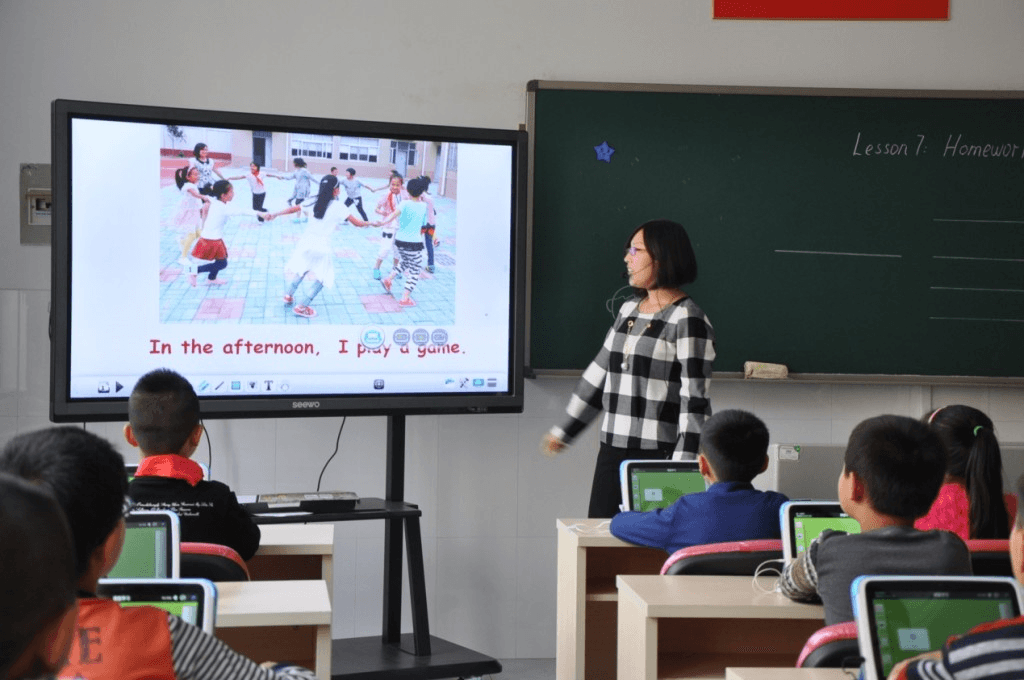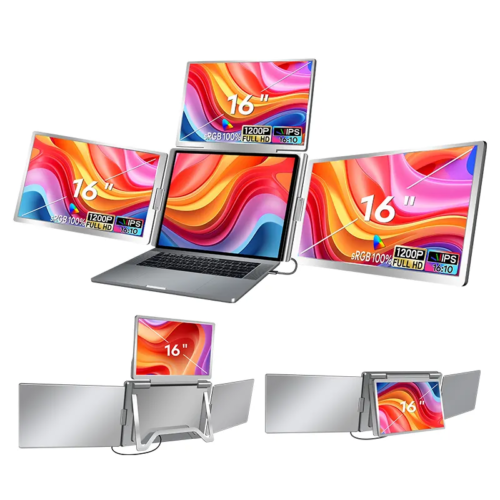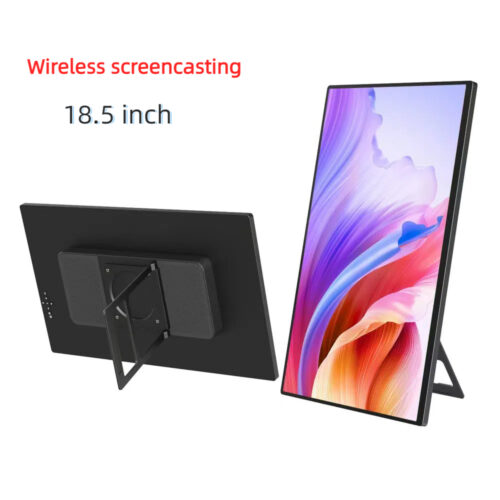Introduction
Education is a universal right, yet the pathways to achieving it differ widely for students with special needs. For these learners, accessible and adaptive technology serves as a lifeline to personalized education. Advanced tools like monitor dual screens, dual screen portable monitors, and wireless screens for laptops are not merely gadgets; they’re enablers of inclusion, fostering collaboration and supporting individual learning journeys.
This blog dives deep into the following questions:
- How can dual-screen monitors create a more accessible and intuitive learning environment for students with special needs?
- What role does roll up TV technology play in enhancing interactivity through gesture recognition and voice-to-text features?
- How do high-brightness, low-blue-light displays improve visual health and engagement for students?
- In what ways can multi-screen setups synchronize special needs students with mainstream classrooms?

1. Empowering Special Education Through Dual Screen Monitors
Visualizing Education
Dual-screen monitors offer a highly organized interface for students with cognitive or learning disabilities. One screen displays core instructions, while the other provides complementary visuals or simplified explanations.
- Real-World Scenario: A student with autism spectrum disorder (ASD) uses a dual screen portable monitor to access a structured schedule on one screen while interacting with dynamic learning materials on the other.
- Benefits: This reduces cognitive overload by offering a clear distinction between tasks, improving focus and comprehension.
Supporting Diverse Needs
For educators, a monitor dual screen setup ensures that they can present tailored content to individual learners while managing a group class. Adaptive learning systems synced with dual screens further enable real-time adjustments based on each student’s pace.
2. Assistive Technology for Sensory Impairments
Visual Disabilities
Expandable screens equipped with magnification and high-contrast modes assist students with low vision. Combining dual screen portable monitors and high-brightness technology allows these learners to clearly see text, graphs, and diagrams.
- Solution for Educators: Tools like wireless screens for laptops can project larger, easily accessible visuals in real-time, allowing visually impaired students to stay engaged in lessons.
Hearing Impairments
For students with hearing challenges, the combination of roll up TVs and multi-screen displays offers synchronized voice-to-text captions and sign language guides.
- Interactive Applications: Gesture-based interactions through roll up TVs help students respond non-verbally, creating an immersive and responsive classroom experience.

3. Dynamic Gesture and Voice Interaction Using Roll Up TVs
Revolutionizing Engagement
The compact, flexible design of roll-up TVs allows teachers to integrate dynamic content presentations, including voice-recognition technology.
- Scenario: A speech therapist works with a student using real-time voice-to-text conversion on a roll up TV, encouraging vocabulary development and articulation skills.
Gesture Recognition for Empowerment
Students with mobility impairments can use gestures to navigate educational content on a wireless screen for laptops, removing barriers to active participation.
4. Optimizing Assistive Tools for Personalization
Tailored Education Plans
By using a combination of dual-screen setups and portable monitors, educators can design highly customized lesson plans. This ensures that each learner’s strengths and challenges are considered.
- For Dyslexia: Multi-screen systems display text in dyslexia-friendly fonts while providing audio instructions on a second screen.
- For ADHD: Task management apps on dual screens keep students on track with visual reminders.
Enhancing Teacher-Student Interaction
Wireless screens for laptops allow teachers to move freely while interacting with students, creating a more dynamic and personalized teaching experience.
5. Promoting Eye Health with Advanced Display Technology
Low Blue Light for Safer Viewing
Students with sensory sensitivities greatly benefit from low-blue-light screens that reduce strain without compromising clarity.
- Health Benefits: High-brightness displays paired with dual-screen setups ensure visual comfort, especially for extended learning sessions.
Practical Implementation
Schools using portable monitors with adaptive brightness technology can provide a safer and more inclusive environment for students with visual sensitivities.
6. Real-Time Data Tracking for Individualized Learning
Analyzing Progress
With multi-screen solutions, educators can monitor student performance in real time.
- Scenario: Using a dual screen portable monitor, a teacher tracks a student’s progress in math while simultaneously comparing it with classroom-wide analytics.
Empowering Adaptive Learning
By integrating machine learning algorithms, these tools can predict areas where students need additional support, making learning more efficient and targeted.
7. Synchronized Learning Between Special Needs and Mainstream Classrooms
Bridging the Gap
Dual-screen setups enable special needs students to participate in mainstream classes without missing essential support.
- Example: A wireless screen for a laptop displays live classroom notes while a second screen provides real-time captions or simplified translations.
Collaboration Tools
Wireless technologies also promote peer collaboration, ensuring that all students can engage in group activities regardless of their needs.
8. Innovating for the Future: Emerging Trends in Special Education Technology
The Role of AI
From predictive analytics to personalized content recommendations, AI-powered tools enhance the functionality of dual-screen monitors in special education.
Integration of Virtual Reality
Combining VR tools with roll-up TVs could provide immersive experiences for special needs students, enabling them to learn through simulations and interactive environments.
Conclusion: Building an Inclusive Future
The evolution of educational technology has opened doors to previously inaccessible opportunities for special needs students. Advanced tools like monitor dual screens, dual screen portable monitors, wireless screens for laptops, and roll up TVs bridge gaps in accessibility, personalize learning experiences, and create pathways for success.
As technology continues to evolve, so does our ability to cater to diverse educational needs, ensuring that every student—regardless of their challenges—can achieve their full potential. By embracing these innovations, educators and institutions can revolutionize the landscape of special education for years to come.
Explore Full ONext Portable Monitor
-
 ONext 100% SRGB 16 Inch Quad Monitor 1 Cable for Trifold Laptop Monitors, Vibrant 3-Display for Windows & MacOS
ONext 100% SRGB 16 Inch Quad Monitor 1 Cable for Trifold Laptop Monitors, Vibrant 3-Display for Windows & MacOS -
 ONext 14″ Quad Monitor Laptop Screen Extender – FHD 1080P, 1 Cable for 3 Screens, Portable IPS for 13.6″-17.3″ Laptops (Win/Mac M1-M3)
ONext 14″ Quad Monitor Laptop Screen Extender – FHD 1080P, 1 Cable for 3 Screens, Portable IPS for 13.6″-17.3″ Laptops (Win/Mac M1-M3) -
 ONext 23.8″ FHD100Hz 100% sRGB Dual Screen Laptop Extra Monitor – 315° Adjustable for Work & Gaming
ONext 23.8″ FHD100Hz 100% sRGB Dual Screen Laptop Extra Monitor – 315° Adjustable for Work & Gaming -
 ONext 16″ Laptop Screen Extender Foldable Dual Stacked Portable Monitor with Built-in Hub, Magnetic Design, Single Cable for 1080P Triple Monitor Setup
ONext 16″ Laptop Screen Extender Foldable Dual Stacked Portable Monitor with Built-in Hub, Magnetic Design, Single Cable for 1080P Triple Monitor Setup -
 ONext 18.5″ Laptop Dual Screen Monitor 1080P 100Hz, Foldable Double Screen Laptop Display for Win/Mac
ONext 18.5″ Laptop Dual Screen Monitor 1080P 100Hz, Foldable Double Screen Laptop Display for Win/Mac -
 ONext 15.6″ Dual Screen 1080P FHD Stacked Folding Triple Monitor HDMI USB-C Portable Dual Monitor for Laptop Windows Mac (No Driver Needed)
ONext 15.6″ Dual Screen 1080P FHD Stacked Folding Triple Monitor HDMI USB-C Portable Dual Monitor for Laptop Windows Mac (No Driver Needed) -
 ONext 18.5 inch Portable Laptop Monitor ,Wireless screencasting Laptop Monitors with Kickstand
ONext 18.5 inch Portable Laptop Monitor ,Wireless screencasting Laptop Monitors with Kickstand -
 Portable Laptop Screen 16.1 inch Laptop Monitors Full HD, IPS, USB Type-C, Flicker Free, Blue Light Filter Silver With Foldable Stand
Portable Laptop Screen 16.1 inch Laptop Monitors Full HD, IPS, USB Type-C, Flicker Free, Blue Light Filter Silver With Foldable Stand -
 24 inch Stand By Me TV Movable Touch Television
24 inch Stand By Me TV Movable Touch Television
